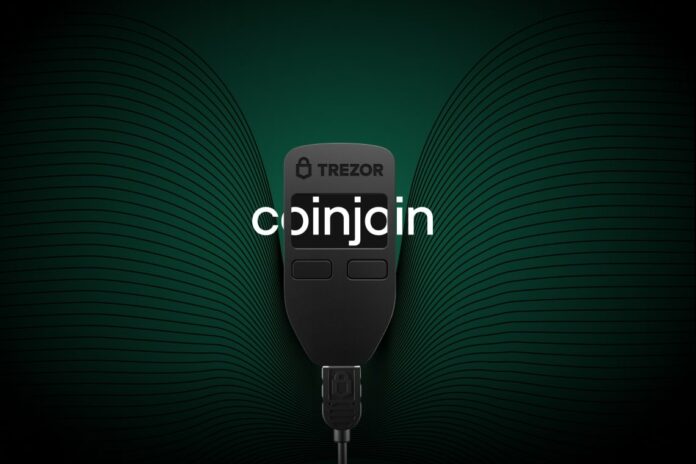Yesterday, the famous hardware wallet manufacturer Trezor announced the implementation of coinjoin on the Model One.
Previously this functionality had been enabled on the Model T, while now it has been extended to what is by far one of the most popular hardware wallets.
Summary
Trezor’s hardware wallets
Trezor has two different models of hardware wallets on the market, namely the Model T and the Model One.
The Model T is the more accessorized and expensive one, with a color touchscreen and 1,456 supported cryptocurrencies, including coins and tokens.
It costs almost three times as much as the Model One, which is the basic model without a touchscreen and with 1,289 supported cryptocurrencies.
Trezor was the first company in the world to develop a hardware wallet a decade ago.
The Model One was put on the market the following year, while the Model T arrived in 2018.
What is special about Trezor’s hardware wallets is that their software is open source, which means it has been checked and verified by many independent developers looking for any holes.
Years after its launch, it is safe to say that Trezor’s hardware wallets are among the most secure currently around.
The coinjoin feature
CoinJoin refers to a feature that allows for an increased level of anonymity regarding transactions.
In this regard, it is worth mentioning that hardware wallets are cryptocurrency self-custody devices, i.e., totally KYC-free. In fact, the setup and use of a hardware wallet does not require any verification of the user’s identity.
CoinJoin is a transaction mixing protocol, usable with Bitcoin and compatible cryptocurrencies, that allows users to increase the level of privacy by protecting transactions from on-chain analysis tools.
Its operation is very simple in theory: many transactions from different users are unified into a single set of transactions so that, once executed, no user can easily be able to determine the source of funds for each specific transaction.
In fact, the inputs and outputs of transactions made with coinjoin cannot be seen and associated, so even the recipients of these transactions cannot verify which address the tokens it received came from.
Of course, since this is a system that operates outside of anti-money laundering regulations, it can only be used by anonymous self-storage wallets, and not, for example, on centralized exchanges.
Instead, normal on-chain transactions generally turn out to be traceable, because the sender’s address, the amount sent, and the recipient’s address are shown in plain text, unless high-privacy cryptocurrencies such as Monero are used.
Coinjoin on Trezor
By implementing coinjoin, users of Trezor’s Model One will be able to send Bitcoin as part of a larger collaborative transaction, with individual transaction history obscured on the blockchain. This strengthens the privacy of BTC transactions for users of Trezor’s hardware wallets.
The use of conjoins on Trezor’s devices is made possible by its collaboration with Wasabi Wallet, a well-known Bitcoin wallet focused specifically on privacy and specializing in coinjoins.
Trezor claims to be the first hardware wallet manufacturer to enable coinjoin transactions directly from devices.
Trezor CEO Matěj Žák said:
“Born in 2013, the Trezor Model One is the original hardware wallet and is widely used by Trezor fans in over 150 countries. Giving those users the option of making their transactions private is just as important as it is with the Trezor Model T. Our extended coinjoin availability puts control, privacy and security in the pocket of every Trezor user.”




